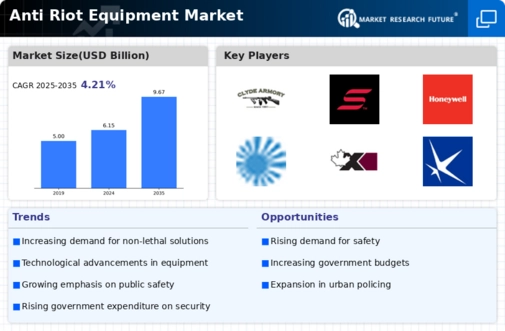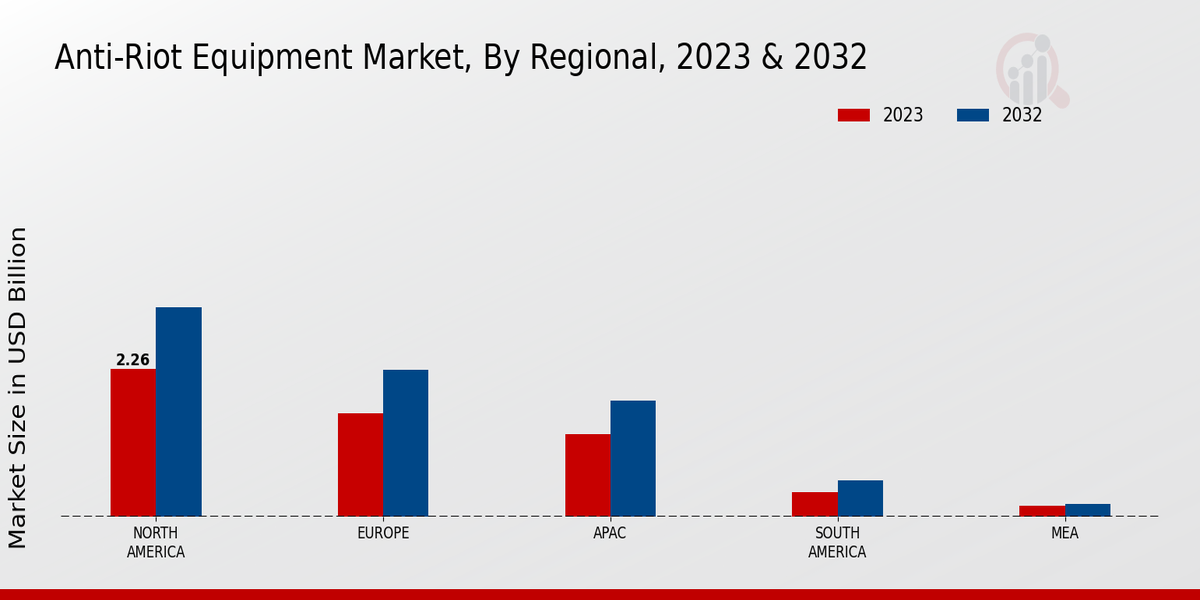Rising Crime Rates
The Global Anti Riot Equipment Market Industry is significantly influenced by rising crime rates in urban areas. As violent protests and riots become more frequent, law enforcement agencies are compelled to enhance their preparedness. Statistics indicate that cities with higher crime rates experience more civil disturbances, necessitating the acquisition of anti-riot gear. This trend underscores the importance of equipping police forces with appropriate tools to manage public safety effectively. Consequently, the market is poised for growth, as agencies prioritize investments in anti-riot equipment to address the challenges posed by increasing crime and unrest.
Increasing Civil Unrest
The Global Anti Riot Equipment Market Industry is experiencing growth due to rising instances of civil unrest across various regions. Factors such as political instability, social inequality, and economic challenges contribute to protests and demonstrations. For instance, countries in Europe and the Americas have witnessed significant protests, prompting law enforcement agencies to invest in anti-riot gear. This trend indicates a growing demand for protective equipment, which is projected to reach 6.15 USD Billion in 2024. As unrest continues, the need for effective crowd control measures becomes paramount, further driving the market's expansion.
Technological Advancements
Technological advancements play a crucial role in the evolution of the Global Anti Riot Equipment Market Industry. Innovations in materials and design have led to the development of more effective and durable anti-riot gear. For instance, the integration of smart technology in helmets and shields enhances communication and situational awareness for law enforcement personnel. Additionally, advancements in non-lethal weaponry, such as tear gas and rubber bullets, provide safer alternatives for crowd control. These developments not only improve the effectiveness of anti-riot equipment but also contribute to the overall market growth, as agencies seek to adopt the latest technologies.
Government Initiatives and Funding
Government initiatives aimed at enhancing public safety are pivotal in shaping the Global Anti Riot Equipment Market Industry. Many governments allocate substantial budgets for law enforcement agencies to procure advanced anti-riot gear. For example, in 2023, several countries increased funding for police departments to acquire non-lethal weapons and protective equipment. This financial support not only boosts market growth but also encourages innovation in product development. As a result, the market is expected to grow at a CAGR of 4.2% from 2025 to 2035, reaching an estimated 9.67 USD Billion by 2035, reflecting the importance of government involvement.
Global Events and Sporting Activities
Global events and large-scale sporting activities often serve as catalysts for the Global Anti Riot Equipment Market Industry. Such events can attract large crowds, increasing the potential for unrest and disturbances. Law enforcement agencies are therefore compelled to enhance their crowd control measures to ensure public safety. For example, major international sporting events have historically seen heightened security measures, including the deployment of anti-riot equipment. This trend emphasizes the necessity for law enforcement to be prepared for potential disruptions, thereby driving demand for anti-riot gear in anticipation of these events.



















Leave a Comment